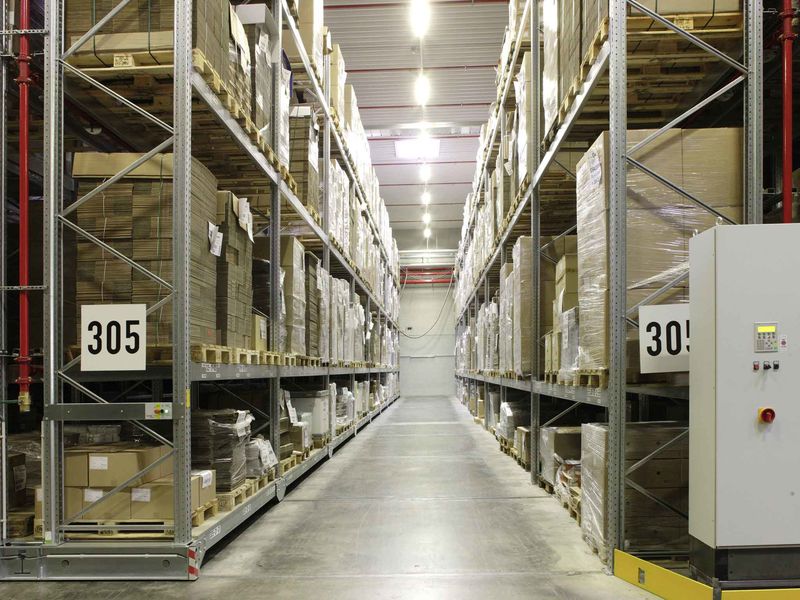In today’s fast-paced, technology-driven world, warehouse automation is no longer a luxury—it’s a necessity for businesses seeking to stay competitive. As e-commerce continues to boom and consumer expectations for faster deliveries rise, efficient and smart warehouse operations are key to meeting these demands. Automation offers a wide range of benefits that not only enhance productivity but also improve accuracy, safety, and overall profitability.
Here’s a look at the most significant benefits of warehouse automation in today’s business environment:
1. Increased Efficiency and Throughput
One of the most immediate benefits of warehouse automation is the significant boost in operational efficiency. Automated systems like conveyor belts, robotic picking systems, and Automated Storage and Retrieval Systems (AS/RS) can process orders much faster than manual labor. These systems run continuously without the need for breaks or shifts, leading to higher throughput and the ability to handle increased order volumes, especially during peak seasons like holidays or sales events.
2. Enhanced Accuracy and Reduced Errors
Human error is one of the most common issues in traditional warehouse operations, leading to picking mistakes, inventory discrepancies, and shipping errors. Automated systems dramatically reduce the likelihood of errors by relying on advanced technology like barcode scanning, sensors, and real-time inventory management. This means fewer returns, better customer satisfaction, and more reliable stock control.
3. Optimal Space Utilization
Warehouse automation allows businesses to maximize their use of storage space. Automated systems like AS/RS can utilize vertical space in ways that manual systems simply cannot. By reducing the need for wide aisles required for forklifts or manual picking, automated warehouses can store more products in the same area. This helps businesses avoid costly warehouse expansions and better utilize their existing real estate.
4. Improved Safety
Automation reduces the need for workers to engage in repetitive, physically demanding tasks, which are often prone to accidents. Robotics and automated machinery handle the heavy lifting, transporting, and sorting of goods, which significantly lowers the risk of workplace injuries. In environments where temperature or hazardous materials are present—such as cold storage or chemical warehouses—automation can also help minimize worker exposure to these risks.
5. Cost Savings Over Time
While the upfront investment in warehouse automation can be significant, the long-term cost savings are undeniable. Automated systems can lead to reduced labor costs, lower error rates (and the associated costs of returns or product damage), and decreased operational inefficiencies. With automation, businesses can operate with smaller, more skilled workforces while maintaining—or even increasing—output.
6. Real-Time Data and Inventory Management
Modern warehouse automation systems are equipped with data analytics tools that provide real-time insights into inventory levels, product movement, and overall system performance. This level of visibility helps businesses optimize stock levels, reduce overstocking or understocking, and make informed decisions about reordering and resource allocation. In addition, these systems can integrate with other business platforms like ERP (Enterprise Resource Planning) or WMS (Warehouse Management Systems) to streamline operations across departments.
7. Faster Order Fulfillment and Shipping
Consumers today expect fast shipping, often within 1-2 days, especially in the e-commerce sector. Warehouse automation drastically cuts down on processing times, enabling businesses to meet these fast fulfillment expectations. Automated picking and packing systems, combined with real-time inventory tracking, allow warehouses to ship out orders in a fraction of the time it would take with manual processes.
8. Scalability
As businesses grow, their storage and operational needs evolve. Automation provides a scalable solution that can easily adapt to changes in demand. Whether you’re dealing with seasonal fluctuations, new product lines, or expanding into new markets, automated systems can be adjusted to accommodate increased workloads without the need for significant changes to physical infrastructure or staffing levels.
9. Sustainability and Environmental Impact
Warehouse automation can also contribute to more sustainable business practices. Automated systems often use energy more efficiently than manual operations, and the ability to optimize space means fewer resources are needed for heating, cooling, and lighting. Additionally, reducing errors and improving order accuracy means fewer returns, which cuts down on the carbon footprint associated with shipping and logistics.
10. Better Workforce Allocation
Automation doesn’t necessarily replace the human workforce but allows employees to focus on more strategic, value-added tasks. Instead of spending time on manual labor like sorting or moving products, workers can focus on tasks that require problem-solving, customer service, and innovation. This shift can lead to greater employee satisfaction and retention, as their roles become more engaging and less physically taxing.
Conclusion
Warehouse automation is no longer a futuristic concept—it’s a present-day solution that delivers measurable benefits. From increasing operational efficiency and accuracy to enhancing safety and sustainability, automation helps businesses not only meet the growing demands of today’s market but also future-proof their operations for tomorrow. As technology continues to evolve, businesses that invest in automation now will be better positioned to maintain a competitive edge and meet customer expectations in an ever-changing landscape.


Comments are closed